Sir Walter Raleigh's Roanoke Colony
Sir Walter Raleigh's Roanoke Colony
Today the author talks about Sir Walter Raleigh's attempt at the settlement of Roanoke, Virginia.
From the Book
Colonial American History Stories - 1215 - 1664
Transcript:
Greetings, today I will talk about Sir Walter Raleigh's attempt at the settlement of Roanoke, Virginia.
England's first attempt to establish a colony in the New World by Humphrey Gilbert had ended in failure. Gilbert's half brother Sir Walter Raleigh would make a second attempt after Queen Elizabeth renewed Gilbert's patent and transferred it to Raleigh.
Before getting started, I would encourage you to subscribe to the Mossy Feet Books You Tube channel for more great content. I also entreat you to visit my website, www.mossyfeetbooks.com. There you will find sample chapters, podcasts, a slew of content and links to where you can buy my books. While visiting the web site you can subscribe to it and receive email notifications of when I publish a new book or other content, like this video and podcast. You can also subscribe to the Mossy Feet Books You Tube Channel to ensure you do not miss any of my content. This episode is based on my book, Colonial American History Stories - 1215 - 1664. It is the first book in my 6 book Timeline of United States History Series.
You can find my books locally at the Walnut Street Variety Shop in Batesville, Indiana.
The queen bestowed the award on Raleigh on March 25, 1584. About a month later Raleigh dispatched a scouting expedition to the region that would eventually become Virginia on April 27, 1584. The The expedition arrived in the region of Roanoke Island on July 4, 1584. The explorers nosed around the area, establishing relations with to Amerindian tribes and making notes about the customs of the local people as well as recording data about the geography of the area, after which they returned to England and reported to Raleigh what they found. Grenville took two native chiefs named Wanchese and Manteo with him to England.
Raleigh had assigned a man named Sir Thomas Harriot the task of interviewing the chiefs while they were in England. He learned about their language and customs and designed an alphabet for their Algonquin language. The exposure to these chiefs intrigued Harriot so much he joined Raleigh's expedition to Roanoke Island.
About a year later Raleigh sent a fleet of five ships, Tiger, Roebuck, Red Lion, Elizabeth, and Dorothy to establish a colony under the command of Sir Richard Grenville. Prior to departure the captains of the ships agreed to meet in Puerto Rico if a storm separated the ships. A storm did blow up and the Tiger became separated. Grenville was on this ship and he sailed to Puerto Rico to reunite with the other ships. After waiting several days, he sailed off to the Outer Banks. The Tiger collided with a shoal, which ruined most of the food supply. The other four ships eventually showed up. Grenville established a settlement with 107 men on Roanoke Island, leaving a man named Ralph Lane in command. Grenville sailed off for England after promising the men he would return in the autumn with additional supplies.
Meanwhile, Spain seized several English merchant ships that were anchored in several Spanish harbors. There had been increasing tension between the two nations for some years. The seizing of the ships spawned a 19 year conflict that has come to be known as the Anglo-Spanish War.
In retaliation for the seizures Queen Elizabeth authorized Sir Francis Drake to lead a raid against several Spanish ports in the West Indies. Drake's fleet consisted of 7 ships and 1800 men. Drake arrived in the Indies and immediately invaded Santiago. After occupying if for a couple of weeks, he left and raided Santo Domingo on January 1, 1586. He occupied the city and spent about a month pillaging it and then ransomed the city for 25,000 gold ducats. Drake's next target was St. Augustine. He captured the city on June 6, 1586. He plundered the city, then burned it to the ground.
Raleigh then sailed north to Roanoke Island to check on the plight of the colonists there.
The colonists were in dire straits. Food supplies were short and relations with the natives, never good, had worsened when an incident occurred in May in which the men had beheaded a native chief. The natives retaliated by attacking the fort, which the English managed to repel. They had been depending on the natives for food and other supplies and with the conflict that supply source was threatened. Several tribes lived in the area. Some of them were friendly to the English while others were not.
Drake arrived on the scene in Mid June 1586 with a fleet of 23 ships, most of which were seized from the Spanish and were loaded with plunder. Seeing the sorry state of things he offered to leave them a ship. A hurricane that lasted 3 days damaged that ship, so Drake next offered to allow them to board one of the ships and return to England. After debating their situation, the men decided to return with Drake and departed on June 19, 1586. Sir James Harriot, who had accompanied the expedition returned to England with Drake. He had eaten some of the food prepared by the natives and had taken samples of some of them. The samples included tobacco and potatoes. When he returned he took these samples with him and introduced them at the English court upon his return.
Grenville had launched a relief expedition, which he accompanied. This expedition landed on July 3, 1586, finding it deserted. He was unaware that Drake had taken the men he left there the previous year back to England just a few days before he arrived. Grenville left a small garrison of 15 men on the island, intending to return the following year with another group of colonists.
In the next episode I will talk about Raleigh's next attempt to establish a colony in Virginia. The articles in the book contain much more detail about the topics discussed. Additionally, there are other topics not included in the podcast. I encourage you to subscribe to both my web site, mossyfeetbooks.com and this You Tube channel.
I hope you enjoyed this podcast and thank you for listening.


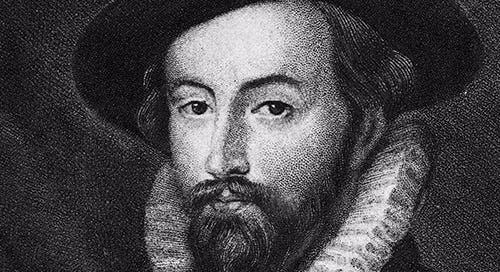




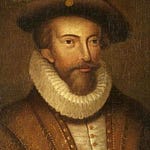
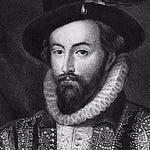

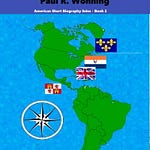
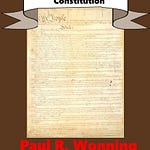

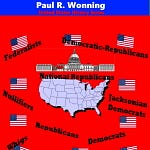
Share this post